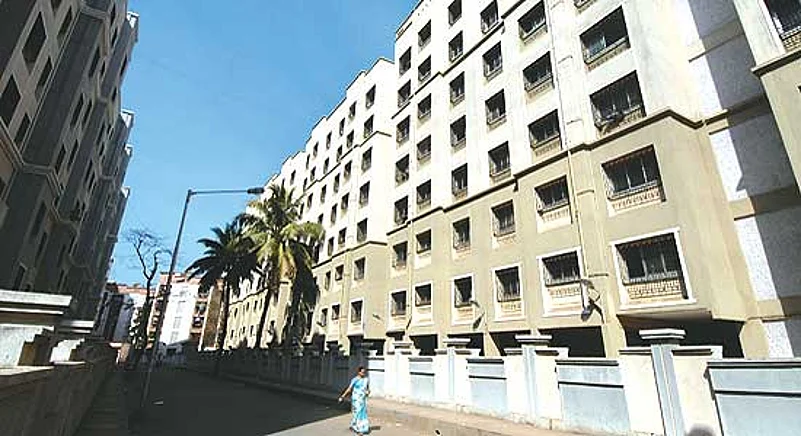Unaffordable Housing?
- Around 15% price escalation in last six months hitting demand for affordable housing projects
- Low appetite for risk, commute distance or drawbacks in infrastructure is holding back buyers
- Perceptions of affordable housing differs across cities and income groups
- Price is a starting point, but most consumers are also seeking quality and infrastructure
***
It has staved off the worst effects of the slowdown and spawned over 450 projects across the country from some of India’s leading property developers. But even before the boom in affordable housing fructifies, worrying questions are being raised about the viability of demand for one- or two-room apartments at a reasonable price—Rs 5 lakh to Rs 30 lakh. Simply put, at a time when credit is easily available, consumer interest seems to be flagging. Is the trend for affordable housing in trouble?
“Property prices have risen 15-20 per cent in the past six months. If there is a rise in home prices, people will get out of the market, as it is the middle-income group that is driving sales,” warns Renu Sud Karnad, managing director, HDFC ltd. As property prices firm up, there’s a ripple effect on the lower segment. Now, there are fears that a further 25-30 per cent rise in residential property prices might strangle the demand from those seeking low-priced housing.
The apprehension seems justified. During the year-long liquidity crunch from mid-2008, the government had stepped in to offer a helping hand: it partnered private development and provided incentives for affordable housing in the sub-Rs 20 lakh bracket. Yet, either there aren’t enough appealing projects available or there aren’t enough takers for ‘affordable’ housing in cities like Mumbai, Greater Noida or New Gurgaon. “During the downturn, when supply was more than the demand, there was a decline in prices,” says a spokesperson for developer Parsvnath. “Now, as the demand has started picking up, there’s a cascading impact on the prices.”
The problem is multifold. The most important facet is the perception of what is ‘affordable’ housing. Property developers broadly bracket it as one- to three-bedroom apartments priced below Rs 30 lakh, but this categorisation does not work uniformly across different cities and income groups. Moreover, post-recession, there has been a drop in risk appetite, says Kumar Gera, chairman of CREDAI, a real estate developers body. He says, “Today, buyers have become more price-sensitive; they look at sustainability, affordability, ability to service debt. Unlike before, the lower the price, the greater is the number of buyers.”
With about 60 per cent of buyers depending on financing, it is the sub-Rs 20 lakh units that are finding takers. The catch, however, is that even attractive prices are not proving a lure for many projects. Industry-watchers cite some projects near the Greater Noida expressway or those off Manesar, which are places lacking in proper roads or other infrastructure. Even in Ghaziabad, where affordable housing has long been the norm, the entry of new developers in the ‘affordable’ segment hasn’t pushed sales. “The launch of new projects has slowed since November as there is some oversupply of units,” says Samir Jasuja, CEO of PropEquity, a Gurgaon-based real-estate analysis firm.
Similarly, PropEquity’s report till early November 2009 indicates that there has been better offtake in the sub-Rs 15 lakh category, particularly at locations closer to large cities. Overall, of the 90,000 units available in the ‘affordable’ category, only 40,000 had been bought. Describing 40 per cent absorption as not bad by industry standards, Jasuja adds that with market sentiments improving sales have since inched up.

Admitting to having ventured into the low-cost segment to tide over the slowdown, Rohtas Goel, CMD of Omaxe, avers, “As there is a lot of appetite for affordable houses, we find no problem in sales and plan to launch more projects.” Omaxe is one of the developers that has held on to the price and sold 90 per cent of the 1,400 flats on offer in the Rs 15-25 lakh category in Indore, Faridabad and Bahadurgarh, on Delhi’s border, in the last four months. The company also sold 1,500 one-bedroom units in Vrindavan for Rs 8 lakh each.
Developers point out that land cost is a big decider in the final price tag. That’s why many projects are coming up further away from big cities. Where transportation and other facilities compensate, there is no lack of takers. Falcon Realty Services has got good response for its 2,500 units priced at Rs 5.9 lakh-Rs 28 lakh at Global Eco City, a 45-minute drive from Delhi international airport. Good facilities, including transportation, is proving the clincher.
As Anshuman Magazine, CMD of CB Richard Ellis, South Asia, states, “Consumers are now aware and demanding quality.” This includes social infrastructure like schools and other such facilities along with physical infrastructure. “Consumers lower down the pyramid tend to work backward from the price point. Just because the price point is low, you can’t expect people to compromise on quality, social and physical infrastructure and location, as the commute time means not just time but also money,” says Jerry Rao, former CEO of MphasiS. Rao is building 2,000 flats of various sizes, priced under Rs 10 lakh, outside Bangalore, and plans more ventures in cities like Chennai and Mangalore.
With demand for big-ticket projects picking up, many fear that developers with lots of commitments may lose interest in the affordable segment. Many projects are already running behind schedule for various reasons, including city regulations, forcing people to move up the segment. As Rajiv Mehrotra of Noida-based Sunshine Enterprises puts it, “Demand is there, but there are hardly any houses below Rs 20 lakh available.” Already staring at rising inflation, people’s euphoria over affordable housing looks likely to fade—unless the government lends a helping hand.


























